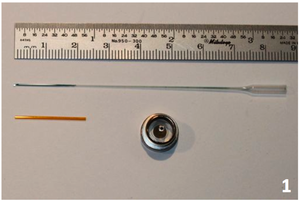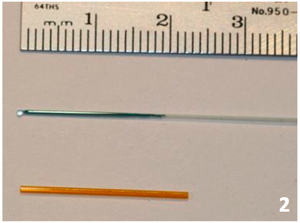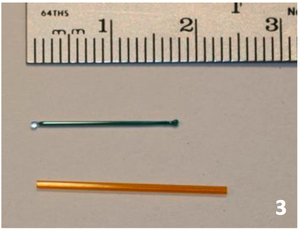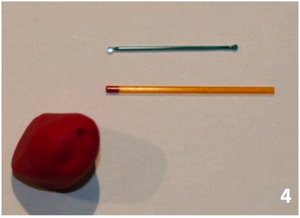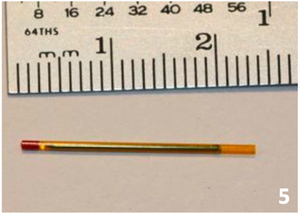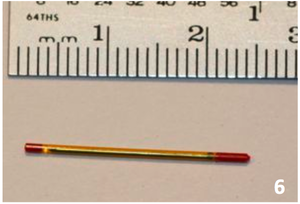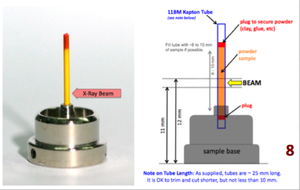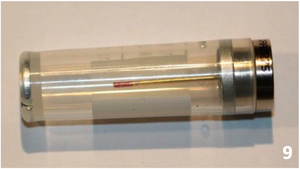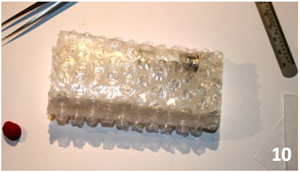Difference between revisions of "Nesting Capillaries in Kapton Tubes"
| Line 19: | Line 19: | ||
===Step 3=== | ===Step 3=== | ||
Seal the glass or fused quartz capillary using a flame or other method (epoxy, clay etc). The powder should be secured in the capillary with as little empty volume as possible. Freely moving powder can shift out of the X-ray beam during data collection. | |||
[[image:NestCapInKaptonImage_3.png|300px|Image 3]] | [[image:NestCapInKaptonImage_3.png|300px|Image 3]] | ||
===Step 4=== | ===Step 4=== | ||
Plug one end of the Kapton tube. Modeling clay is used in the image above, but other methods are possible. Ensure that any glue used hardens completely in the tube. (note: general white glue does not dry or adhere to the Kapton and is not recommended ) | |||
[[image:NestCapInKaptonImage_4.png|300px|Image 4]] | [[image:NestCapInKaptonImage_4.png|300px|Image 4]] | ||
Revision as of 20:04, 26 January 2012
Background
Specific mail-in samples (for example air sensitive material) may require the use of additional glass or fused quartz capillary tubes. Any additional capillary must fit and be secured inside the supplied Kapton tube.
Sample preparation instructions for his are shown below, and can be downloaded as a [.pdf file].
Note: 11-BM does not provide glass or quartz capillaries for mail-in experiments. Only Kapton tubes (with an inner diameter of 0.81 mm) are provided for the mail-in service. Please see the wiki page on Glass & Quartz Capillary Tubes for more info.
Instructions
Step 1
Load well ground powder inside glass or fused quartz capillary. Capillary with diameter of 0.5 mm will easily fit side supplied Kapton tube. (a capillary with diameter of 0.7 mm might fit if care is taken with sealing)
Step 2
Fill capillary length with 1 – 2 cm of powder. Needs to be shorter than the length of the Kapton tube.
Step 3
Seal the glass or fused quartz capillary using a flame or other method (epoxy, clay etc). The powder should be secured in the capillary with as little empty volume as possible. Freely moving powder can shift out of the X-ray beam during data collection.
Step 4
Plug one end of the Kapton tube. Modeling clay is used in the image above, but other methods are possible. Ensure that any glue used hardens completely in the tube. (note: general white glue does not dry or adhere to the Kapton and is not recommended )
